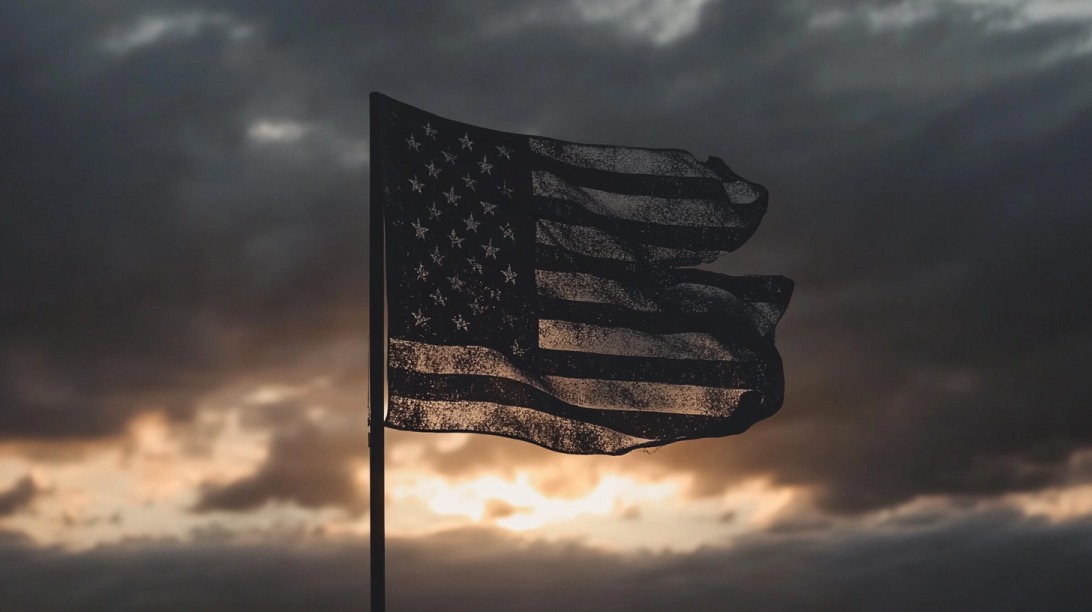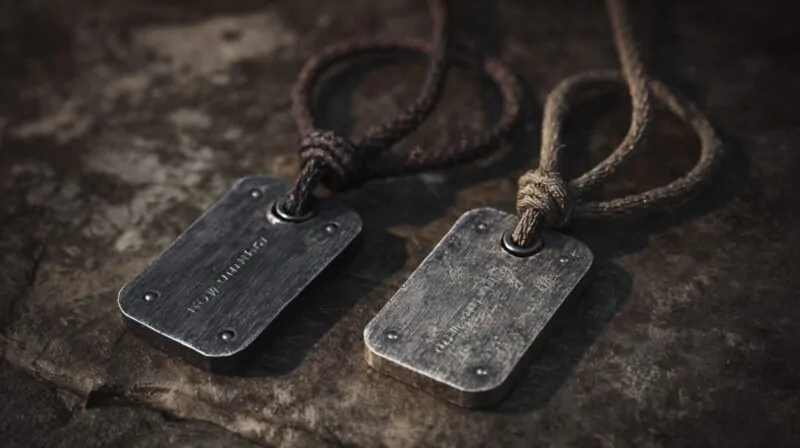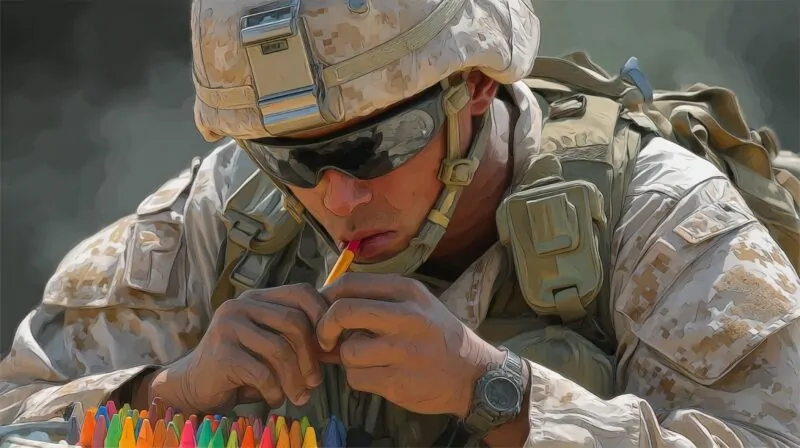Symbols have long shaped American identity, with the red, white, and blue flag representing unity, freedom, and sacrifice.
Recently, non-traditional versions like black and grey American flags have gained attention. Often spotted on apparel, vehicles, or in online discussions, these versions challenge traditional interpretations.
Many now seek clarity on what these altered flags signify.
Table of Contents
ToggleModern Interpretations and Variants
Modern adaptations of the American flag in black and grey tones reflect a decisive shift in how symbolism is used to express:
- Political
- Social
- Emotional sentiments
Color changes carry visual weight, and their meanings vary depending on who displays them and in what context.
Military Influence and Tactical Usage
In military contexts, especially among U.S. special operations units, black flags often represent operational toughness and psychological dominance.
These variants usually signal uncompromising will, resilience, and a refusal to retreat.
- Symbolizes commitment to mission success regardless of circumstance
- Used to project confidence and psychological leverage
- Functions as a unifying symbol among elite units
- Color choices match tactical gear and environments
Protest Symbolism and Public Defiance
Civil movements have repurposed black and grey flags to make visual statements against authority and governance.
Muted colors suggest disillusionment or protest, stripping the original flag of celebratory undertones.
- Discontent with government policies
- Emotional detachment from national unity
- Call for accountability and reform
- Public rejection of perceived overreach or injustice
Flags in this form often appear during demonstrations, marches, and rallies. They serve as a bold but nonverbal way to express dissent.
Anarchist and Anti-Authoritarian Traditions
Black flags have long been embraced in anarchist and anti-authoritarian movements.
Dating back to the 19th century, such use rejected control imposed by monarchies, states, or any hierarchical power structure.
In modern times, that legacy continues through subcultures and activist circles.
- Historical continuity with anti-state movements
- Symbol of liberation through resistance
- Emphasis on voluntary cooperation over enforced order
Cultural Adoption in Music, Art, and Fashion
What began in ideological circles gradually made its way into mainstream expression.
Music videos, album covers, runway shows, and graffiti walls now feature black and grey flag motifs. Cultural figures adopt these visuals to project rebellion, self-expression, or confrontation.
- Defiance of societal norms
- Celebration of outsider identity
- Emotional rawness without patriotic gloss
- Nonconformity in aesthetic and message
The Grey American Flag Variant
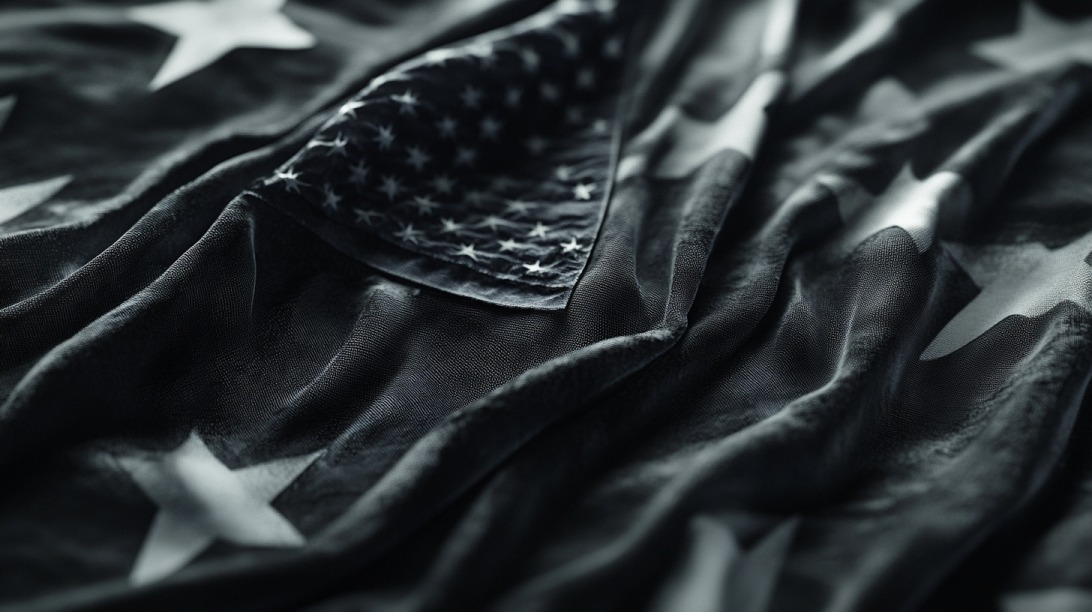
Grey American flags present a distinct shift in tone when compared to the starkness of their all-black counterparts. While both designs stray from the traditional red, white, and blue, grey carries a different weight. It often symbolizes neutrality, solemnity, or emotional suppression.
Unlike black, which can suggest hostility or direct opposition, grey leans toward quiet mourning, passive resistance, or reflective patriotism.
In military settings, grey flags serve a functional purpose. Subdued tones blend easily with tactical uniforms, gear, and urban or desert backdrops. Practicality often drives their use, allowing soldiers to maintain symbolic representation without compromising concealment or strategy.
Symbolically, grey communicates an unspoken protest or acknowledgment of loss. During periods of national grief, such as in the aftermath of tragedy or war, grey versions appear as visual expressions of sorrow without confrontation. They suggest weariness, endurance, and acceptance rather than outright defiance.
- Neutrality and solemnity – a lack of emotional extremes, suggesting calm, detachment, or reflection.
- Quiet mourning – honoring fallen service members or national trauma without overt dramatization.
- Subdued patriotism – loyalty expressed in restrained form, free of fanfare or fervor.
In fashion and lifestyle spaces, grey flags serve another purpose. They often appear in minimalist designs, streetwear collections, or tactical gear setups. Some adopt the design to suggest quiet strength, while others use it to evoke a sense of stoic rebellion.
For those in law enforcement, military surplus culture, or survivalist communities, the grey flag becomes a sign of alignment with preparedness, order, or silent vigilance.
- Minimalist fashion expression – aligning with neutral color palettes and muted aesthetics.
- Tactical symbolism – worn or displayed in conjunction with gear to signal preparedness or alignment with discipline.
- Cultural shorthand for restraint – rebellion without provocation, seriousness without spectacle.
Unlike black flags, which immediately trigger emotional reactions due to their historical and contemporary associations, grey versions often pass unnoticed to the casual observer.
The “No Quarter” Controversy
“No Quarter” is a phrase that originates in the context of war. It implies absolute aggression, showing no mercy, refusing to accept surrender, and killing rather than capturing. Once used in the most brutal battles of history, its revival in modern times carries disturbing weight.
When positioned alongside the American flag, especially in black or grey variants, it signals an uncompromising, even violent ideological posture.
Legal and ethical frameworks under U.S. and international law reject the idea behind “No Quarter.”
Refusing to take prisoners violates the Geneva Conventions and is considered a war crime. Despite this, some groups and individuals now use the phrase to send an aggressive message.
- During social justice protests, it was used by fringe actors to express disdain for compromise.
- During the January 6 Capitol insurrection, flags with “No Quarter” slogans were seen alongside symbols of nationalist and extremist ideologies.
Adoption of this phrase in public demonstrations has triggered heated responses.
Critics argue its use mirrors historical symbols tied to violent white supremacy and Confederate nostalgia. Supporters may claim it represents defiance or patriotic fervor, but for many, its implications cross into dangerous territory.
- Symbolic aggression, a refusal to participate in dialogue or civility.
- Coded communication, potentially signaling to extremist audiences.
- Historical associations with movements known for anti-government and racist ideologies.
When people fly a black American flag bearing “No Quarter,” interpretations quickly fracture. Some observers view it as a bold declaration of principle.
Others see a threat, an invitation to violence, and a rejection of democratic norms. The emotional power of flags amplifies this split.
Psychological and Social Impact
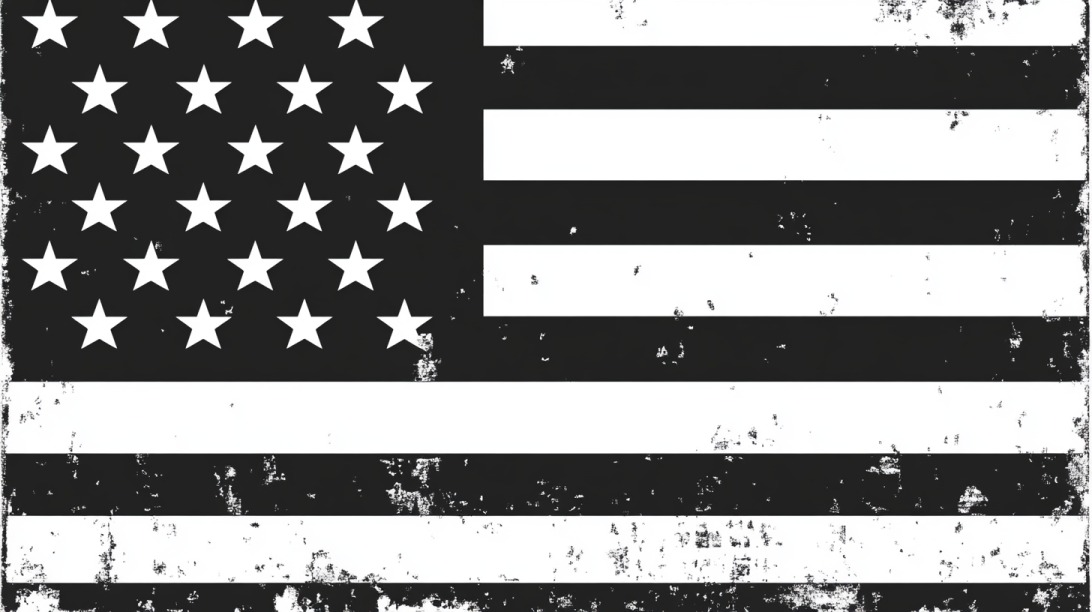
Black and grey American flags deliver a stark visual that commands attention. Red, white, and blue typically communicate valor, freedom, and unity.
In contrast, black and grey present a stripped-down emotional tone, often signaling intimidation, defiance, or emotional detachment.
For some observers, such a flag expresses disciplined patriotism or a refusal to accept current national conditions without protest. It can serve as a quiet show of resolve.
For others, it implies aggression, authoritarian leanings, or fringe political ideology.
Public spaces, political rallies, or private displays all carry different implications. To illustrate this polarizing effect, consider the following opposing reactions:
| Supportive Interpretation | Critical Interpretation |
|---|---|
| Perceived as a symbol of strength or unshakable loyalty | Viewed as a message of hostility or a rejection of democratic norms |
| Viewed as a rejection of performative patriotism in favor of action | Associated with extremist behavior or rebellion against institutions |
| Adopted by veterans or those mourning loss without spectacle | Used by fringe groups to mask radical messages in patriotic imagery |
Social media plays a massive role in shaping how these flags are interpreted. Platforms such as Twitter, Instagram, and TikTok elevate bold visuals and short statements. Nuance is rarely rewarded.
As a result, black and grey flags spread widely, often stripped of their original context. A personal tribute can easily be reframed into a political message, depending on who shares it and how it’s captioned.
The Bottom Line
Black and grey versions of the American flag reflect a growing complexity in how people relate to national symbols.
Their messages range from pride and protest to sorrow and rebellion. Each use case adds a layer to public interpretation, making these symbols both powerful and controversial.
Symbols have the power to unite or divide, inspire or alarm. Treating them with care and acknowledging their layered meanings invites more productive dialogue. Precision in use and awareness of history remain crucial for fostering mutual respect and national clarity.
Related Posts:
- Flying for Less - American Airlines Military…
- A Detailed Guide to Military Branch Colors and Their Meaning
- How to Become a Military UAV Operator: A Complete…
- A Complete Guide to Survivor Benefits for Retired…
- How to Open a Gun Safe - A Complete Step-by-Step Guide
- Does Peacock Offer a Military Discount? Your Complete Guide

